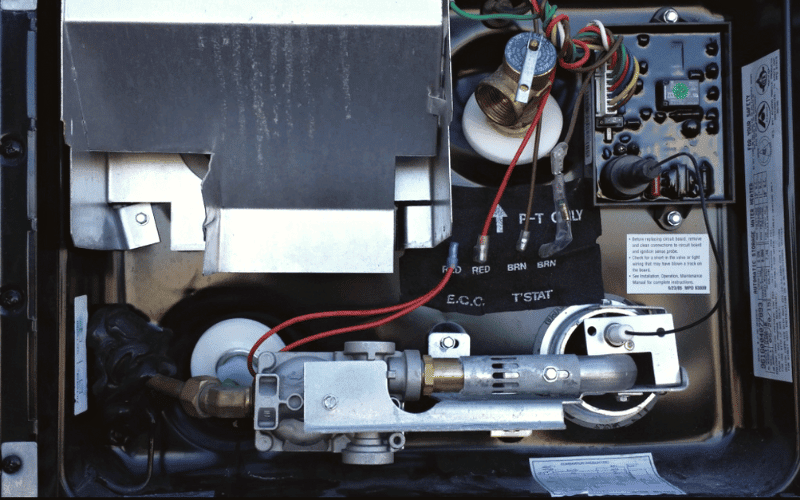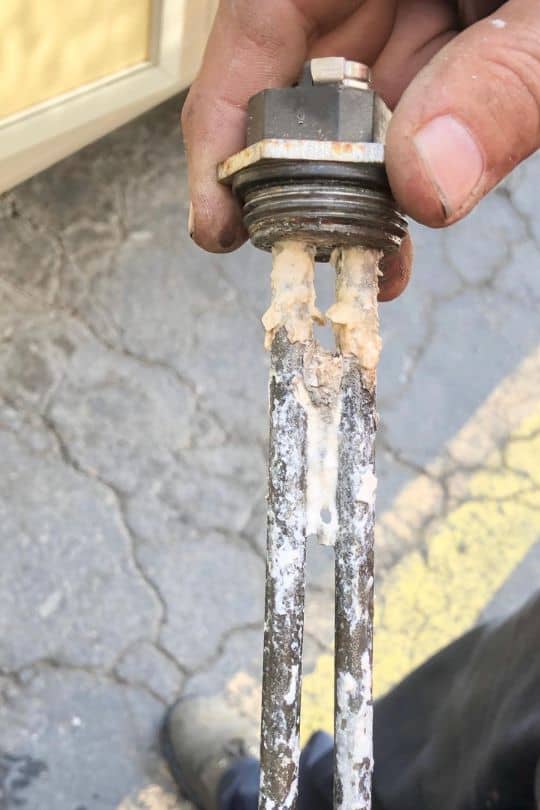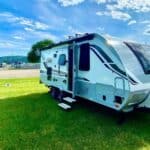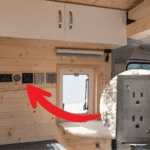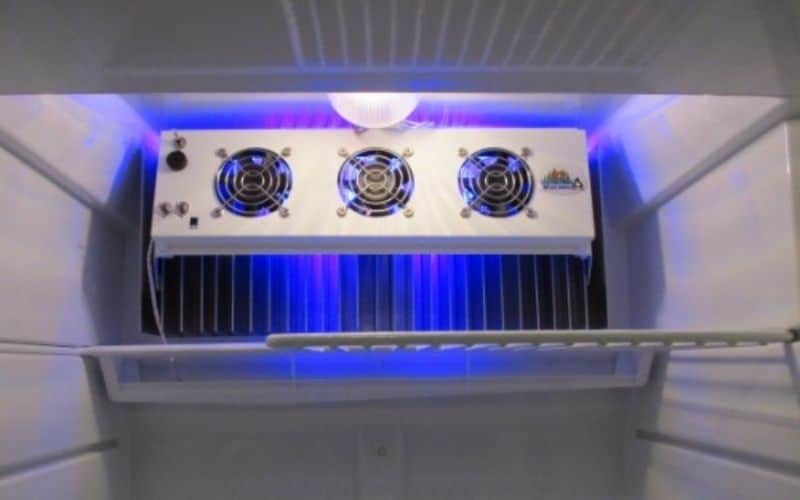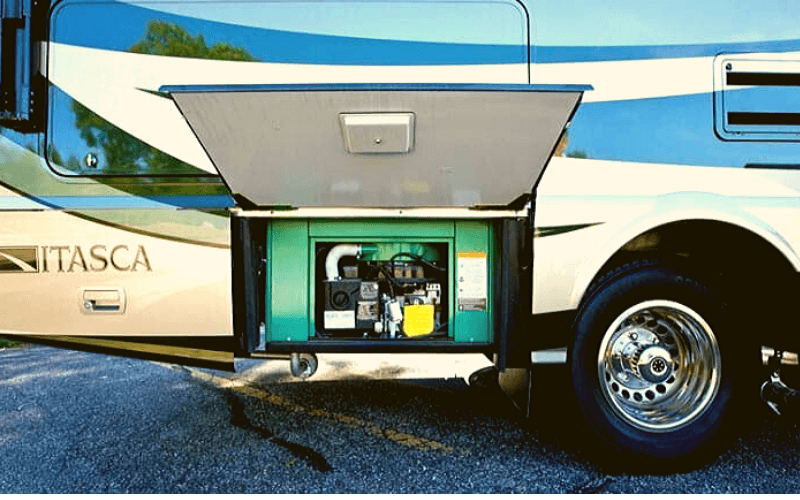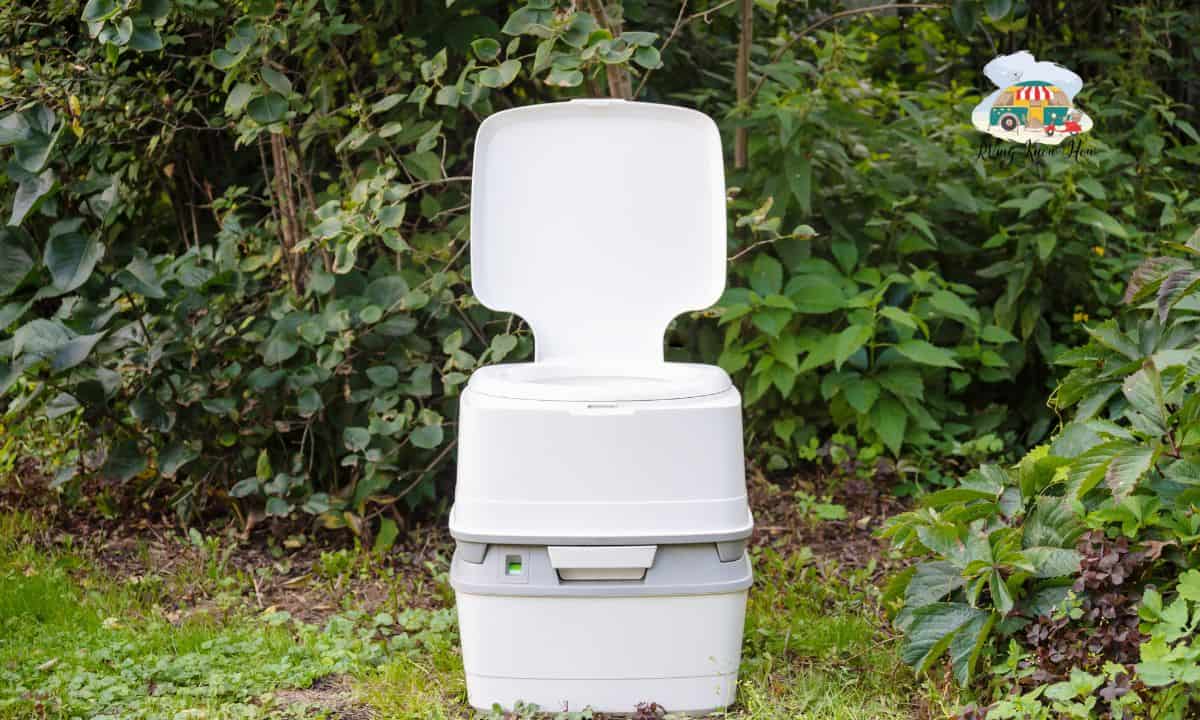Even when you are connected to a campground’s fresh water hookups, you still rely on your RV’s water heater to provide you with the hot water you need to take a shower, wash dishes, and clean your greasy hands.
Unfortunately, a lot of RV water heaters are relatively small, they go through a lot of abuse in their lives and it’s all too easy to forget about them in your general maintenance routine. there’s no hot water in your RV
Did you just turn on the taps, only to be left wondering why your hot water heater isn’t working? Whether you’re left with lukewarm water or no hot water at all in your camper, it can be a frustrating experience.
After all, nobody enjoys the surprise of a bone-chilling, teeth-chattering cold shower, especially during the colder months.
If so, the first things to check are the circuit panel and/or fuse box to make sure it has the power needed to spark or that the electrical element didn’t trip a breaker. If you have a propane water heater, you should also check to make sure the gas valve is open.
While these are the two most common and simplest fixes, they certainly aren’t the only reasons why your hot water heater isn’t working.
In order to restore your hot water as quickly as possible, we need to delve a bit deeper into how RV water heaters work, some of the potential problems that can cause them to fail, and provide you with a comprehensive troubleshooting guide to help you diagnose and resolve the problem with your unit.
How Does An RV Water Heater Work?
Some RV water heaters use internal electric elements to heat the water inside the small, insulated tank. Though propane still tends to be the more common fuel for rapidly heating hot water. Especially in an RV with large liquid propane tanks. Still, even propane water heaters tend to need an electric spark ignition system to start the heating process.
A lot of propane water heaters have some type of pilot light or a newer direct spark ignition system to start the flame that heats the water in the tank. As you use it the hot water that’s drawn out is replaced by cold fresh water. This means you’ll need to give the water heater time to fully warm this new volume before you’ll have hot water on demand again. The larger the tank, the longer it will take to reheat the water. Though propane water heaters tend to heat the same volume of water nearly twice as fast as electrical elements.
An electric water heater essentially has a large electrical resistor at the bottom of it, sealed inside a waterproof housing. Electrical current is impeded as it passes through the electric element, which creates thermal energy that conducts heat into the water. However, this process is slower and can increase the chances of sediment deposits building up inside the hot water storage tank.
10 Common Reasons Why Your camper’s water heater Isn’t Doing So Hot
Beyond seemingly simple things like tripped breakers and closed gas valves, there are a few other prime candidates that might be causing your RV’s water heater to fail.
Accurately troubleshooting the cause is best done with a methodical approach, while taking into account the symptoms of the problem.
Even if it ends up being something you can’t fix on your own, knowing why your RV’s water heater isn’t working might help save you some money on the professional repair bill.
1. A Breaker Might Have Tripped or a Fuse Burned Out
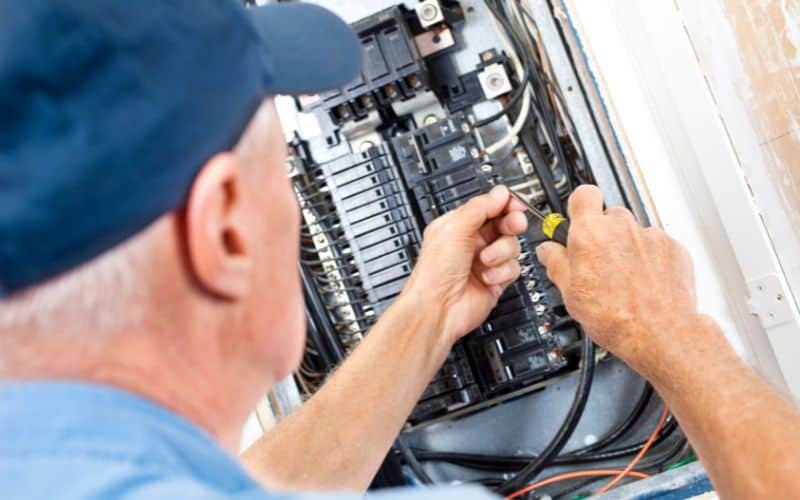
If you have an electric water heater in your RV it can draw a lot of power. If there’s a minor power surge from something like a shore power pedestal, it can trip a breaker or blow out a fuse. When this happens the heater will be dead, as well as anything else connected to that circuit. Though a lot of RV manufacturers give an electric water heater its own dedicated circuit.
If you reset the breaker or replace the fuse and it immediately goes out again, then you should be highly suspicious of a wiring problem. A short in a wire or a loose connection that causes arcing can just as easily trip a circuit breaker.
It’s also worth remembering that a lot of modern propane water heaters still need a small amount of electricity to power the spark ignition system or auto-lighting pilot light. These circuits often have more than one thing connected to them, which can increase the risk of an accidental overload that might trip a breaker or burn out a fuse. So, you still can’t completely rule out a minor electrical problem at the circuit panel, just because you have a propane water heater in your RV.
2. The Manual Gas Valve Is Closed or a Problem With Propane System
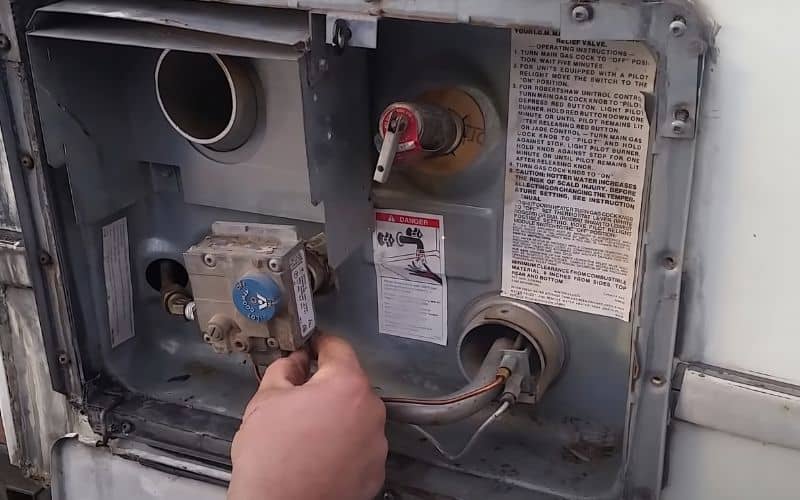
All propane RV water heaters have a primary gas valve that needs to be manually opened and closed. This valve is usually found on the exterior side of the RV and might also be near a propane water heater that uses a standing pilot light. Check this valve from the exterior hatch to make sure it’s on. If you have a slightly older water heater in your RV you might need to manually light the pilot light again.
If you checked the manual gas valve and it was open, but the pilot light won’t light or you aren’t getting any gas flowing to the burner element, you might have a problem with your propane system. A kink in the line or forgetting to open the main gas valve on the front tanks might seem like a silly mistake, but you won’t be the first or 100th person to make it!
3. Check The RV House Batteries or The Shore Power Connection
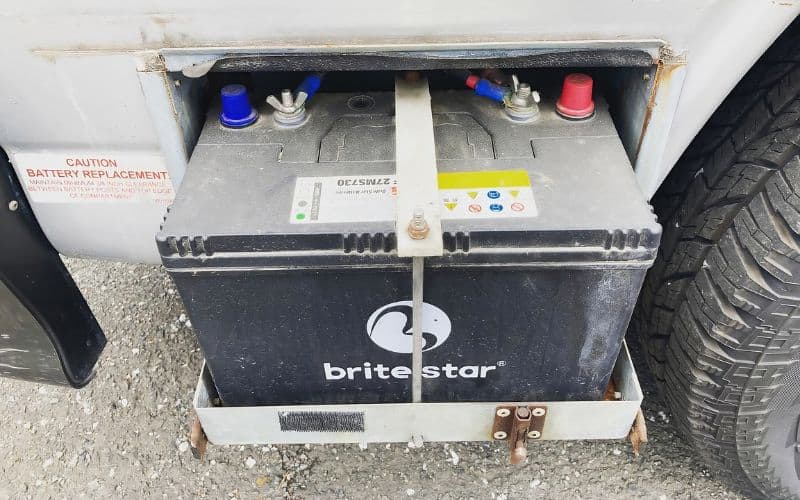
If you have an electric water heater in your RV or you have a newer propane water heater with a direct spark ignition system, a problem with the RV’s house batteries or the shore power connection will interrupt the heating process in the tank.
In a case like this, you will notice other electrical issues throughout the RV. The entire RV might not have power despite the breakers being connected. If the house batteries are below 50% or there is a lot of corrosion buildup on the terminals the lights in your RV might be dim or flickering, and there simply isn’t enough power to run an electric element of a DSI in the RV’s water heater.
You’ll have to either recharge your house batteries, use a generator, or talk to the campground hosts about fixing whatever the problem is with the shore power pedestal.
4. The Bypass Valves Might Still Be Closed
A lot of time the process of draining and sanitizing your RV water system when winterizing can your RV calls for closing the bypass valve. This prevents new water from flowing back into the water heater once drained. It’s a simple mistake that’s made by many people in the spring when they rush to get their RV ready and forget to reopen the valve.
Check the bypass valves to make sure that they’re in the correct position to deliver hot water and refill the tank with fresh water!
5. Igniter Might Not Be Centered
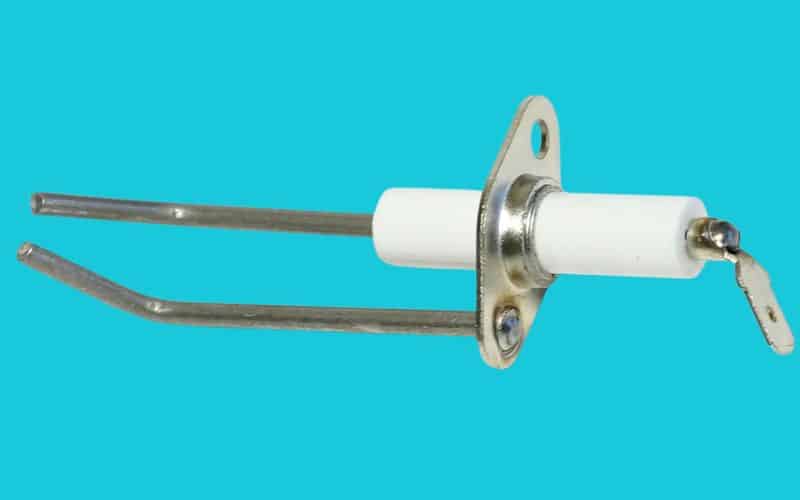
A DSI (Direct Spark Igniter) needs to be centered and perfectly in position to start the propane combustion process at the base of the water heater. If you have a bad habit of packing things into the same compartment as the RV water heater, it’s entirely possible that the DSI was bumped or bent. If it’s just a few millimeters out of position, it might be too far away from the propane burner to support ignition.
In a case like this, the DSI might spark when you turn the water heater on, and the gas is running normally, with the valve open, but the two won’t come together to support ignition. If it looks to be a little off-center or you can see a bend in the wire housing, try manually adjusting it with a pair of needle nose pliers. Then restart the water heater and watch to see if the spark and gas combine properly.
6. Dust & Debris Might Be Clogging the Burner Element
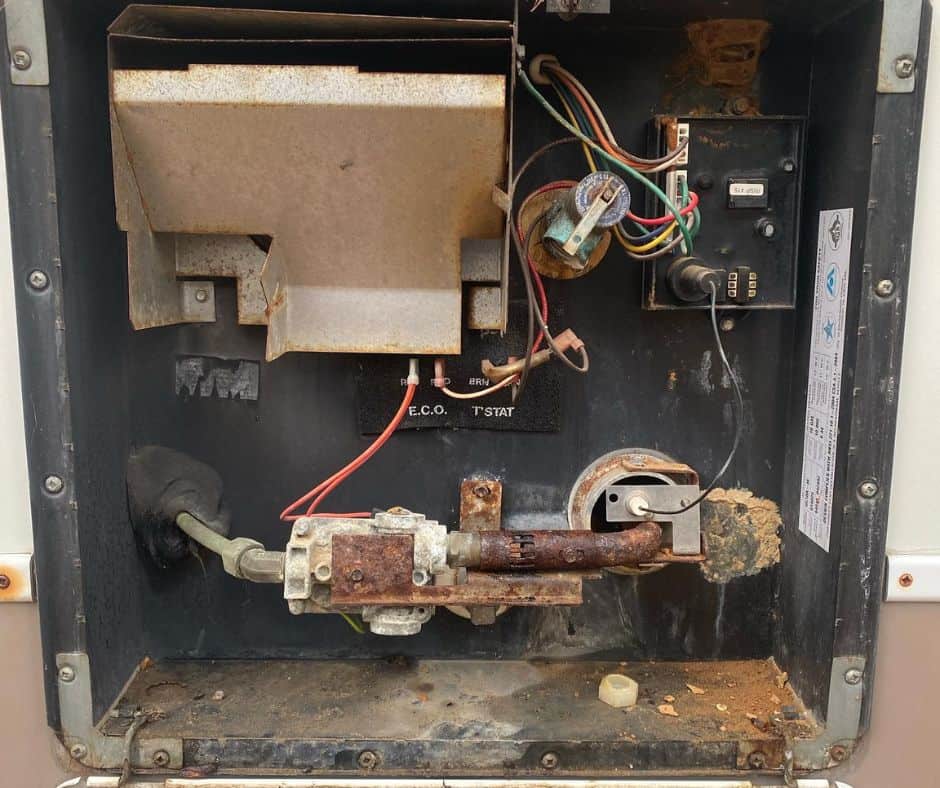
If your propane water heater is lighting but it goes out again it might simply be that there’s dust and other debris that’s preventing the burner from working efficiently. Some even have a safety system built into them that will arrest the flame. Though it’s often that dust, soot, or cobwebs are partially clogging the burner element.
If your burner looks dirty, and won’t stay lit despite all the other systems working correctly, you can clean it using the following steps.
7. The Hi-Limit/ECO Button Needs To Be Reset
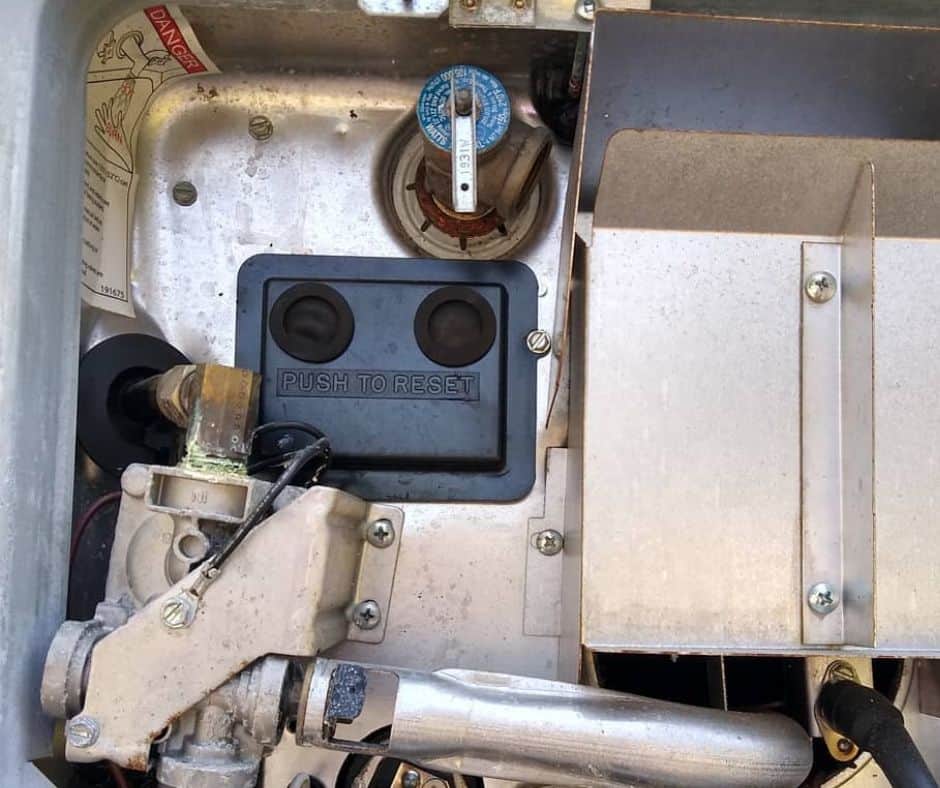
Most RV water heaters have aHi-Limit/Emergency Cut-Off switch. It essentially serves as a fail-safe safety system that shuts off the water heater when the thermostat can’t keep the temperature below a set point. This prevents some of the catastrophic overheating you’ve probably seen replicated on TV science shows.
When the Hi-Limit ECO shuts the water heater down it won’t turn back on until the temperature inside the reservoir cools. Then you need to press the orange or red button to reset your RV’s hot water heater. Most RV water heaters hide the reset button under a metal plate on the backside of the tank or near the thermostat.
Sometimes there are two buttons. One for the electric DSI element, and one for the propane burner. If your model does have two buttons, be sure to reset each.
8. Your Thermostat Might Be Bad
Let’s say you find the Hi-Limit/ECO button, you press it and after a half hour or so, you have warm water again. Then an hour or two goes by and the water is running cold. So, you go back, press the button again, and everything seems to be working. Only to rinse and repeat a few hours later with cold water and an inert RV water heater.
In a scenario like this, you’re probably dealing with a bad thermostat on your RV water heater. Most people choose to call in a professional repairman at this point.
If you happen to be mechanically adept, you can easily find the replacement thermostat and if you have the right electrical tools for the job, you might be able to replace your RV water heater’s thermostat with the following steps.
9. The Thermocouple Is Preventing the Pilot Light from Staying Lit
If you have an older RV the water heater might use a pilot light to maintain an on-demand flame status. Sometimes the pilot light can go out. Especially if you recently had to change out a propane tank. Though it’s also possible that you have a bunch of dust and soot buildup around your water heater’s propane burner element to let the pilot light burn efficiently.
Most of the time, you simply need to relight it. If it won’t stay lit then you might need to clean and inspect the pilot light and the thermocoupleusing the following steps.
10. Your Electric Water Heater’s Element Is Bad
If you have an electric water heater in your RV and you’ve tested out all the other possibilities, it might simply be that the element inside is dead or dying. They have a limited lifespan, and the heavy usage they tend to go through in an RV can accelerate their demise.
Signs that your RV’s electric water heater element is bad often include things like:
Most of the time it’s more cost-effective to simply buy a new water heater than it is to pay a professional to repair it. Though you still want to make sure that the element is actually bad before you chuck the water heater and start shopping for a new one. This requires some basic tools, a multimeter, and the following steps.
Conclusion
The sad truth is that most RV water heaters have a hard life and need routine maintenance to keep them running in peak condition. This includes cleaning away dust and soot from the burner element as well as the pilot light. While you’re inspecting and cleaning, take the time to make sure that your water bypass valves are open.
Make sure that your gas valves on the main liquid propane tanks and the water heater are also open to provide a vigorous flame. If you have a propane water heater and you’ve been using the water heater compartment for storage, take a moment to check the DSI to make sure that the spark is close enough to the burner element. It might simply have been bumped and needs to be gently realigned.
If these relatively simple measures don’t get your RV’s water heater working, you might need to dig a little deeper. Reset the Hi-Limit/ECO button and test your thermostat. If this doesn’t restore consistent hot water, you might need to replace the thermostat altogether. If you have an electric water heater, you should also take the time to check the element with a multimeter. It’s worth checking before you completely replace the thermostat. If the element is dead or dying, you might want to consider simply buying a replacement water heater for your RV.

